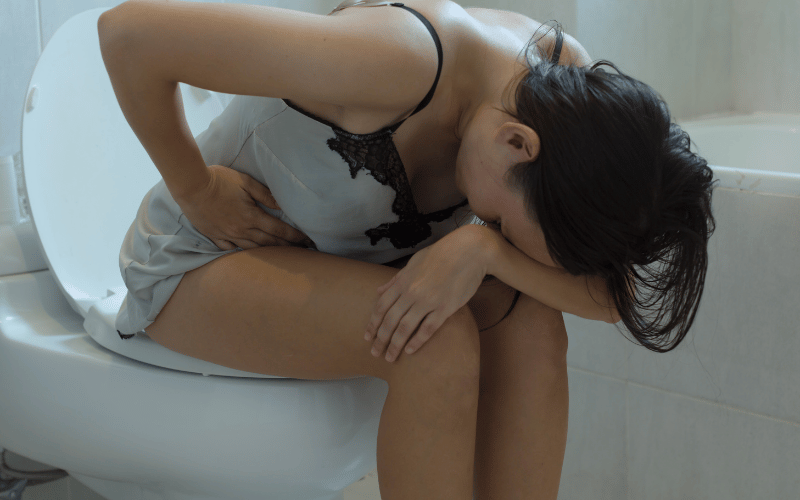Symptom 4: Liquid Stool

You’d think someone struggling with an impaction wouldn’t deal with diarrhea. However, the body can throw curveballs, and liquid stool amidst fecal impaction is one of them. Here’s a baffling situation: while the hardened stool blocks passage, any newly formed stool that’s more liquid may bypass this blockage, trickling out. It’s a bit like water finding its way around a rock in a stream. This phenomenon often misleads folks into thinking they’re experiencing typical diarrhea.
To understand this symptom, think of our intestines as dedicated workers on a production line. Despite a jam (the impaction) downstream, production doesn’t stop. The intestines continue to churn out waste, and with the primary exit blocked, this waste takes the form of a detour, manifesting as liquid stool. This is the body’s adaptive response, its way of ensuring that waste removal, though disrupted, doesn’t come to a complete standstill.
The primary risk with this symptom lies in its misinterpretation. One might resort to anti-diarrheal medications, thinking they’re addressing the issue. But in reality, such medications could exacerbate the impaction. It’s a classic example of how mistaking the symptom for the disease can lead to misguided solutions.
Apart from the confusion, there’s a genuine health concern here. Persistent liquid stools can sap the body of essential fluids and electrolytes, leading to dehydration. Moreover, the risk of skin irritation around the anus due to frequent liquid stools is real. It’s not just about discomfort but potential complications that can arise if this symptom is left unchecked.
Liquid stool in the context of fecal impaction is an irony, a symptom that underscores the body’s resilience and adaptability. However, understanding its implications and the potential risks it brings is paramount. It serves as a reminder of the body’s intricate balance and how easily it can tip if we’re not paying attention. (4)